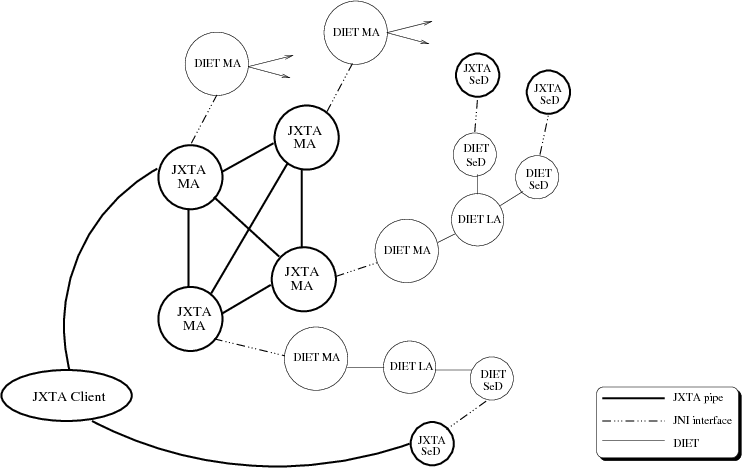



Next: The JXTA components
Up: P2P DIET extension: DIET
Previous: P2P and JXTA
Contents
Description of the current architecture developed with JXTA
In this chapter we discuss one prototype. We plan to update
this prototype that will be totally merged in DIET and able to process
all requests supported by DIET. The DIET architecture is shown
Figure 7.1. We can consider that the elements allowing its use are
divided in two parts:
- a JXTA part that includes client, MA and
SeD. These components are written in java to be able to
communicate together using JXTA.
- a part of integration of the JXTA part in DIET: java (JXTA) and
C++ (DIET) must cooperate. The technology used to allow this
integration is JNI [12] that allows java to call functions
written in C++. JNI is located in the MA and the SeD: The
MA has to launch and communicate with a C++ MA.
A similar interface appears in the SeD communication process.
Figure 12.1:
DIET architecture
|
|
Subsections




Next: The JXTA components
Up: P2P DIET extension: DIET
Previous: P2P and JXTA
Contents
DIET Team - 2008-07-17
